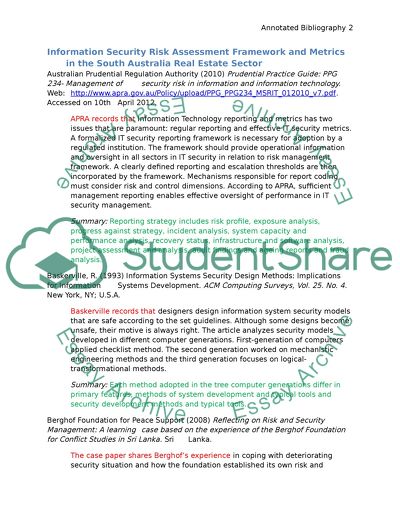Cite this document
(“Information Security Risk Assessment Framework Annotated Bibliography”, n.d.)
Retrieved from https://studentshare.org/information-technology/1396916-information-security-risk-assessment-framework
Retrieved from https://studentshare.org/information-technology/1396916-information-security-risk-assessment-framework
(Information Security Risk Assessment Framework Annotated Bibliography)
https://studentshare.org/information-technology/1396916-information-security-risk-assessment-framework.
https://studentshare.org/information-technology/1396916-information-security-risk-assessment-framework.
“Information Security Risk Assessment Framework Annotated Bibliography”, n.d. https://studentshare.org/information-technology/1396916-information-security-risk-assessment-framework.


